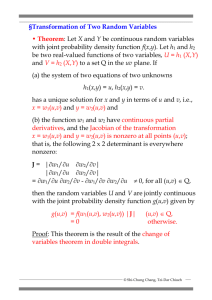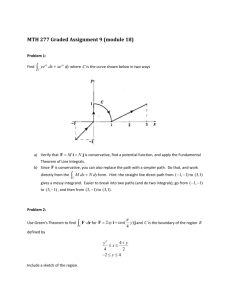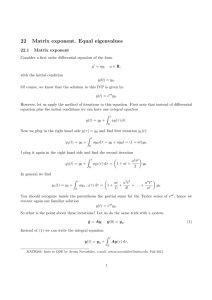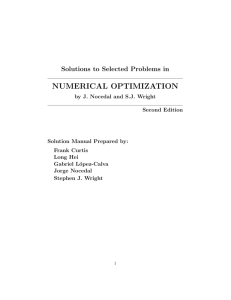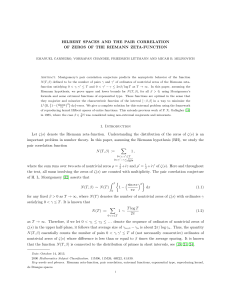How to Find the Square Root of a Complex Number
advertisement
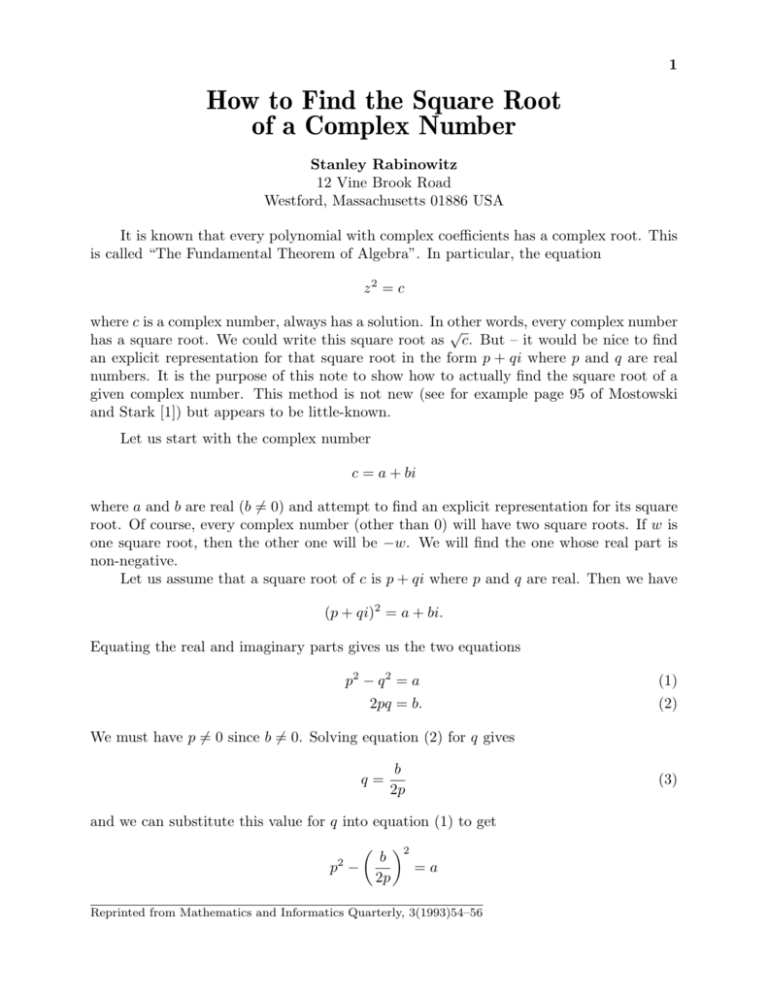
1 How to Find the Square Root of a Complex Number Stanley Rabinowitz 12 Vine Brook Road Westford, Massachusetts 01886 USA It is known that every polynomial with complex coefficients has a complex root. This is called “The Fundamental Theorem of Algebra”. In particular, the equation z2 = c where c is a complex number, always has a solution. In other words, every complex number √ has a square root. We could write this square root as c. But – it would be nice to find an explicit representation for that square root in the form p + qi where p and q are real numbers. It is the purpose of this note to show how to actually find the square root of a given complex number. This method is not new (see for example page 95 of Mostowski and Stark [1]) but appears to be little-known. Let us start with the complex number c = a + bi where a and b are real (b = 0) and attempt to find an explicit representation for its square root. Of course, every complex number (other than 0) will have two square roots. If w is one square root, then the other one will be −w. We will find the one whose real part is non-negative. Let us assume that a square root of c is p + qi where p and q are real. Then we have (p + qi)2 = a + bi. Equating the real and imaginary parts gives us the two equations p2 − q 2 = a 2pq = b. (1) (2) We must have p = 0 since b = 0. Solving equation (2) for q gives q= b 2p (3) and we can substitute this value for q into equation (1) to get p − 2 b 2p 2 =a Reprinted from Mathematics and Informatics Quarterly, 3(1993)54–56 2 or 4p4 − 4ap2 − b2 = 0. This is a quadratic in p2 , so we can solve for p2 using the quadratic formula. We get (taking just the positive solution): a+ 2 p = so that 1 p= √ 2 √ a2 + b2 2 a + a2 + b2 . From equation (3), we find q= b = 2p = √2 2 √ √ b a2 + b2 + a b √ · √ a2 + b2 − a a2 + b2 + a a2 + b2 − a √ b a2 + b2 − a =√ 2 (a2 + b2 ) − a2 √ √ b b a2 + b2 − a a2 + b2 − a √ =√ =√ |b| 2 2 b2 sgn b = √ a2 + b2 − a . 2 √2 2 √ Note that b2 = |b|, so that b/|b| = sgn(b), the sign of b (defined to be +1 if b > 0 and -1 if b < 0). Thus we have our answer: Theorem 1. If a and b are real (b = 0), then √ a + bi = p + qi where p and q are real and are given by 1 p= √ 2 and sgn b q= √ 2 a2 + b2 + a a2 + b2 − a . 3 In practice, square roots of complex numbers are more easily found by first converting to polar form and then using DeMoivre’s Theorem. Any complex number a + bi can be written as r(cos θ + i sin θ) where b a , and sin θ = r r DeMoivre’s Theorem states that if n is any positive real number, then r= a2 + b2 , cos θ = (4) (a + bi)n = rn (cos nθ + i sin nθ). In particular, if n = 1/2, we have √ a + bi = √ θ θ r cos + i sin 2 2 This gives us a straightforward way to calculate √ . (5) a + bi. This method also gives us an alternate proof of Theorem 1. If we apply the half-angle formulae θ 1 + cos θ cos = ± 2 2 θ 1 − cos θ sin = ± 2 2 and to equation (5), we get √ a + bi = √ r 1 + cos θ 1 − cos θ ±i 2 2 where we have arbitrarily chosen the “+” sign for the first radical. Using the value for cos θ from equation (4), we get √ √ 1 + a/r 1 − a/r a + bi = r ±i 2 2 r+a r−a ±i = 2 2 √ √ 2 2 a +b +a a2 + b2 − a ±i = 2 2 which is equivalent to Theorem 1. As before, the “±” sign should be chosen to be the same as the sign of b. 4 √ We sometimes need to find the square root of an expression of the form s+ −d where s and d are real numbers and d > 0. We can use Theorem 1 to get an explicit √ formula√for this square root which is of√the form p+qi where p and q are real. Since s+ −d = s+i d, we can let a = s and b = d in Theorem 1, to get the result: Theorem 2. If s and d are real with d > 0, then s+ √ 1 −d = √ 2 1 s2 + d + s + i √ 2 s2 + d − s . Reference [1] A. Mostowski and M. Stark, Introduction to Higher Algebra. Pergamon Press. New York: 1964.



